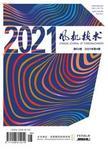直流燃烧室内气体辐射换热特性研究
Study on Radiant Heat Transfer Characteristics of Gas in a Once Through Combustor作者机构:College of Energy and Power Engineering Nanjing University of Aeronautics and Astronautics
出 版 物:《风机技术》 (Chinese Journal of Turbomachinery)
年 卷 期:2024年第66卷第1期
页 面:61-68页
学科分类:082502[工学-航空宇航推进理论与工程] 08[工学] 0825[工学-航空宇航科学与技术]
基 金:National Science and Technology Major Project of China(No.2017-Ⅲ-0003-0027)
主 题:Combustion Chamber Radiant Heat Transfer Radiant Heat Flow Oil-gas Ratio
摘 要:As one of the core components of aero-engine,the thermal protection scheme of combustion chamber has an important impact on its service *** order to improve the design level of high-performance combustion chamber,the radiation heat transfer characteristics of combustion chamber are studied by experimental *** following results are obtained:1)With the increase of oil-gas ratio,the gas temperature increases first and then tends to be stable,the radiant heat flow increases gradually,the convective heat flow increases gradually and then tends to be stable,and the proportion of radiant heat flow remains basically unchanged;2)With the increase of the inlet temperature,the gas temperature increases gradually,the radiant heat flow,especially in the flame barrel head area,increases significantly,the convective heat flow remains basically unchanged,and the proportion of radiant heat flow increases significantly;3)With the increase of the combustion chamber pressure,the gas temperature increases *** the combustion chamber pressure is low,the radiant heat flow increases sharply with the increase of the pressure;When the combustion chamber pressure is high,the radiant heat flow increases slowly with the increase of the *** convective heat flow gradually decreases and tends to be stable,and the proportion of radiant heat flow gradually increases and tends to be *** study is of great significance to improve the calculation accuracy of radiant heat flow of combustion chamber and the reliability design of thermal protection scheme of combustion chamber.



